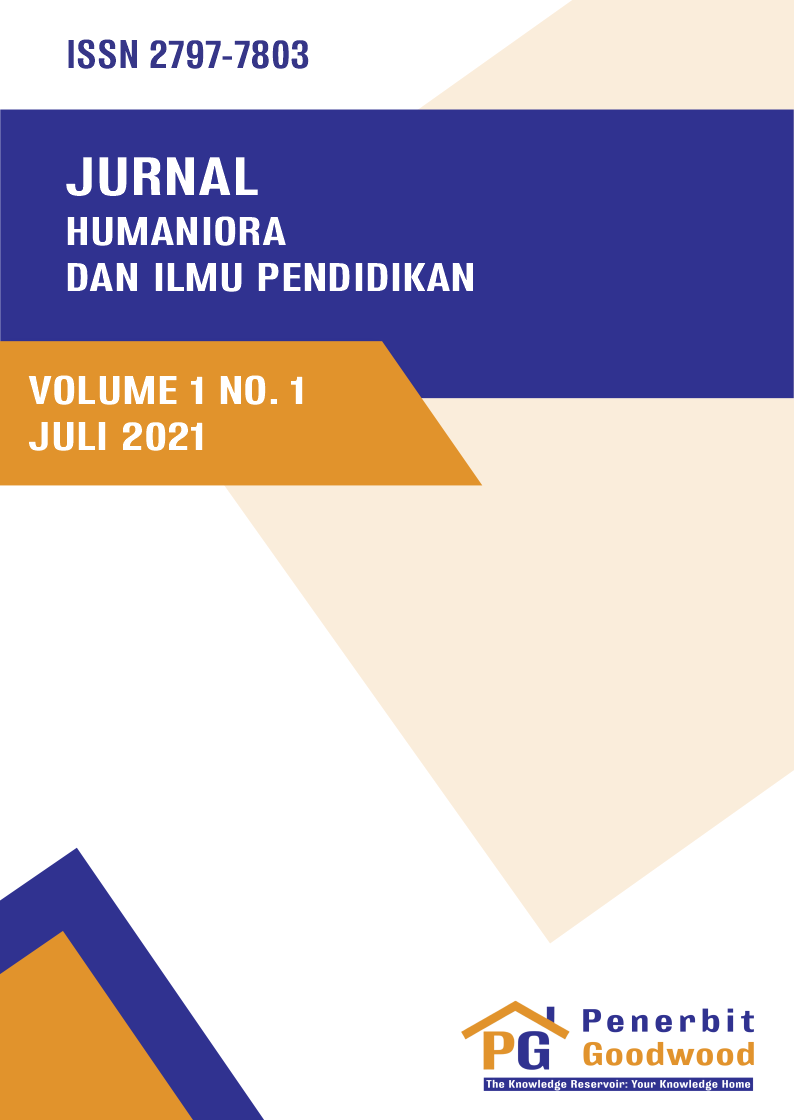Online English Learning during Covid-19 Pandemic
Abstract:
Purpose: This article aims to describe English learning in the Covid-19 Pandemic Era. This article also explains the importance of the Internet in the learning process and the importance of parents in the development of students in the Covid-19 Pandemic Era.
Research methodology: This study used a descriptive method.
Results: This study suggests that parents should motivate their children in this situation because the learning process is carried out at home, and only parents can directly monitor the learning process.
Limitations: This study has limitations. It is the information of parents who guide their students in the learning process, especially English Subject in the Covid-19 pandemic.
Contribution: The study is beneficial for teachers and parents to conduct a better learning strategy during Covid -19 pandemic.
Downloads
Byun, S., & Slavin, R. E. (2020). Educational Responses to the COVID-19 Outbreak in South Korea. SSRN Electronic Journal.
Carrillo, C., & Flores, M. A. (2020). COVID-19 and teacher education: a literature review of online teaching and learning practices. European Journal of Teacher Education.
Crystal, D. (2000).The Cambridge Encyclopedia of Language 3rd (Third) edition. Cambridge University Press.
Ersoz, Aydan, Six Games for the EFL/ESL Classroom, The Internet TESL Journal, Vol, No.6, June 2007
Febriyanti, R. H., & Sundari, H. (2020). Application Of Use In Online English Based Teaching, Rangkiang : Jurnal Pengabdian Pada Masyarakat UP3M STKIP PGRI Sumatera Barat 17–27.
Harmer, J. (2007).The Practice of English language teaching (4th Ed.). Essex: Pearson Longman.
Huang, R., Tlili, A., Chang, T. W., Zhang, X., Nascimbeni, F., & Burgos, D. (2020). Disrupted classes, undisrupted learning during COVID-19 outbreak in China: application of open educational practices and resources.
Pinter, A. (2006). Teaching young language learners. China: Oxford University Press.
Puspitasari, D., Rahayu, W. W., Rohmatunnazilah, & Suwarno. (2020). Exploring the Feelings of International Students: When We Learn Virtually during the COVID-19 Pandemic. Journal of International Students, 10(S3), 142–160. https://doi.org/10.32674/jis.v10iS3.3204
Putra (2012). Model Siklus Belajar (Learning Cycle). www.psb-psma.org
Purwanto, A., Pramono, R., Asbari, M., Hyun, C. C., Wijayanti, L. M., Putri, R. S., & Santoso, P. B. (2020). Studi Eksploratif Dampak Pandemi COVID-19 Terhadap Proses Pembelajaran Online di Sekolah Dasar. EduPsyCouns: Journal of Education, Psychology and Counseling, p.12.
Rusmiati&Rahmasari (2020).E-Learning Pembelajaran Jarak Jauh. Bandung: YramaWidya.
Richard, J.C.and Rodgers, T. S.(1986). Approach and Methods in Language Teaching.Cambridge, UK: Cambridge University Press.
Sartika, R. (2017). Implementing word wall strategy in teaching writing descriptive text for junior high school students. Journal of English and Education, 5(2), 179-186.
Suputra (2020). Kelas Daring Bahasa Inggris di Masa Pandemi: Sebuah Tantangan Pembelajaran(Paper Presentation). Seminar Nasional Riset Inovatif. ISBN 978-623-7482-54-3.
- Byun, S., & Slavin, R. E. (2020). Educational Responses to the COVID-19 Outbreak in South Korea. SSRN Electronic Journal.
- Carrillo, C., & Flores, M. A. (2020). COVID-19 and teacher education: a literature review of online teaching and learning practices. European Journal of Teacher Education.
- Crystal, D. (2000).The Cambridge Encyclopedia of Language 3rd (Third) edition. Cambridge University Press.
- Ersoz, Aydan, Six Games for the EFL/ESL Classroom, The Internet TESL Journal, Vol, No.6, June 2007
- Febriyanti, R. H., & Sundari, H. (2020). Application Of Use In Online English Based Teaching, Rangkiang?: Jurnal Pengabdian Pada Masyarakat UP3M STKIP PGRI Sumatera Barat 17–27.
- Harmer, J. (2007).The Practice of English language teaching (4th Ed.). Essex: Pearson Longman.
- Huang, R., Tlili, A., Chang, T. W., Zhang, X., Nascimbeni, F., & Burgos, D. (2020). Disrupted classes, undisrupted learning during COVID-19 outbreak in China: application of open educational practices and resources.
- Pinter, A. (2006). Teaching young language learners. China: Oxford University Press.
- Puspitasari, D., Rahayu, W. W., Rohmatunnazilah, & Suwarno. (2020). Exploring the Feelings of International Students: When We Learn Virtually during the COVID-19 Pandemic. Journal of International Students, 10(S3), 142–160. https://doi.org/10.32674/jis.v10iS3.3204
- Putra (2012). Model Siklus Belajar (Learning Cycle). www.psb-psma.org
- Purwanto, A., Pramono, R., Asbari, M., Hyun, C. C., Wijayanti, L. M., Putri, R. S., & Santoso, P. B. (2020). Studi Eksploratif Dampak Pandemi COVID-19 Terhadap Proses Pembelajaran Online di Sekolah Dasar. EduPsyCouns: Journal of Education, Psychology and Counseling, p.12.
- Rusmiati&Rahmasari (2020).E-Learning Pembelajaran Jarak Jauh. Bandung: YramaWidya.
- Richard, J.C.and Rodgers, T. S.(1986). Approach and Methods in Language Teaching.Cambridge, UK: Cambridge University Press.
- Sartika, R. (2017). Implementing word wall strategy in teaching writing descriptive text for junior high school students. Journal of English and Education, 5(2), 179-186.
- Suputra (2020). Kelas Daring Bahasa Inggris di Masa Pandemi: Sebuah Tantangan Pembelajaran(Paper Presentation). Seminar Nasional Riset Inovatif. ISBN 978-623-7482-54-3.


